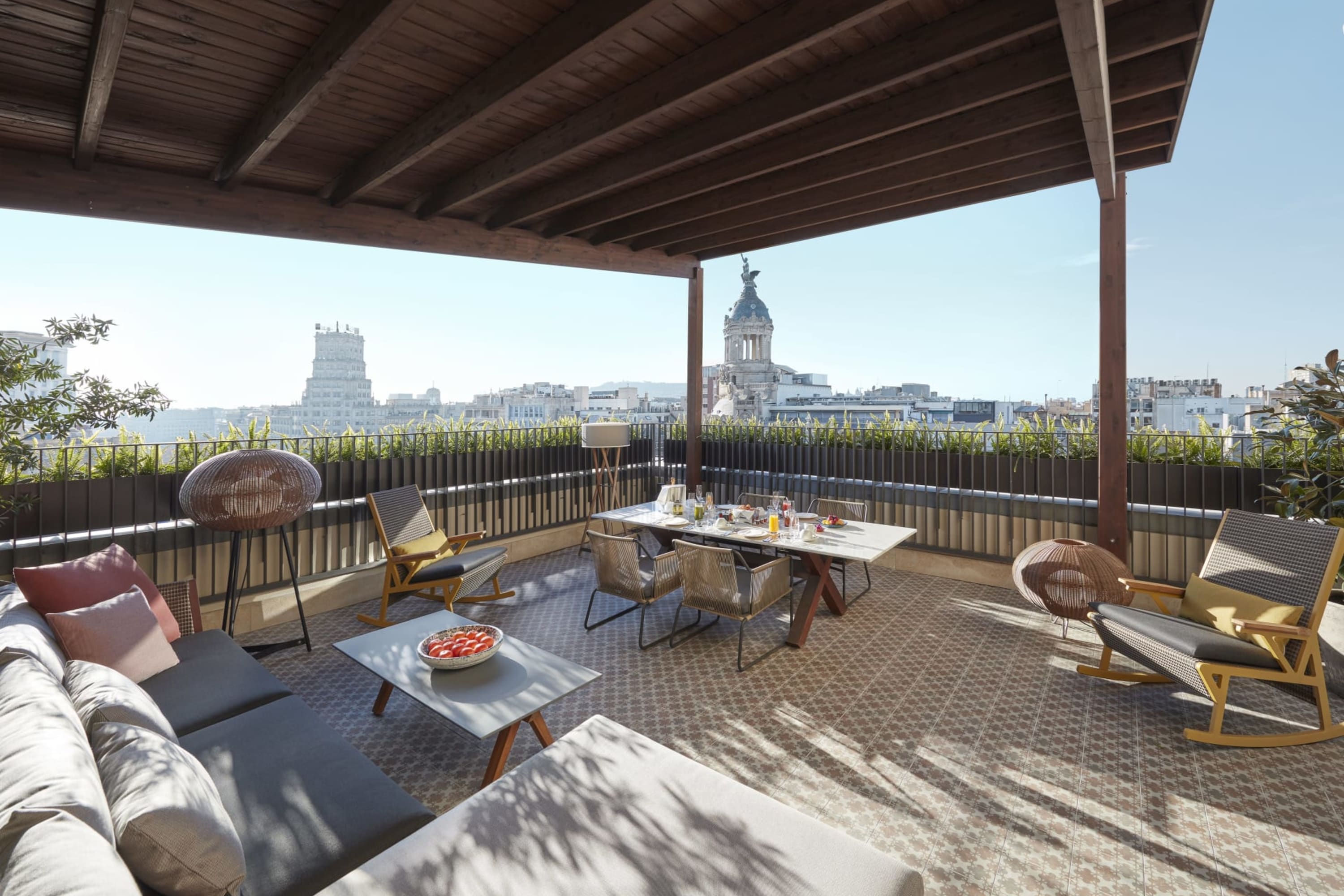
Image courtesy of Mandarin Oriental, Barcelona
In Barcelona, centuries-old alleys intertwine with modern boulevards to create a mosaic of distinct neighborhoods. From the maze-like Gothic Quarter to the colorful paths of Park Güell in Gràcia and the beaches of Barceloneta, there’s a base for every type of traveler.
“Barcelona's soul reveals itself differently in each neighborhood!” Fora X Advisor Seasen Acevedo-Zullo said.
Below, we cover where to stay in Barcelona, plus insights and hotel recs from Fora travel advisors who visited Spain on a 2025 Fora familiarization trip or who have enjoyed their own vacations there.
The Gothic Quarter, Ciutat Vella

Barcelona’s Gothic Quarter alone makes the city one of the best places to visit in Spain for first-timers. The area is part of Ciutat Vella, or “old city” in Catalan, which encompasses the city’s original borders along the Mediterranean.
“For first-timers, I absolutely adore the Gothic Quarter, with its labyrinthine streets that feel like stepping back in time,” Seasen said.
Enchanting landmarks like the Barcelona Cathedral are surrounded by contemporary boutiques, busy cafés and swanky art galleries in a blend of ancient history and modernity. Wandering its narrow, winding cobblestone streets, you’ll encounter a tapestry of Roman ruins, medieval structures and hidden plazas. The Gothic Quarter — or Barri Gòtic, in Catalan — is the cultural and geographic heart of the city. Beyond the historical appeal, the Gothic Quarter is where to stay in Barcelona if you want a central location. (Eixample technically scores better, but not by much.)
“The Gothic Quarter is packed with medieval charm and must-see landmarks,” Fora Advisor Lauren Harvey said. “If you love being in the middle of everything, you can’t go wrong with this area.”
Fora Advisor Arlette Diederiks noted that along with a lively ambiance and charming hotel choices, the Gothic Quarter is very compact, even confusing. If that’s unappealing, there are plenty more places to stay in Barcelona — and you can still easily visit the Gothic Quarter.
Highlights: Cathedral of Barcelona
The Gothic Quarter’s namesake architecture is the area’s main draw. The Cathedral of the Holy Cross and Saint Eulalia — or simply, the Barcelona Cathedral — is perhaps the most prominent example. Its intricately carved façade and soaring spires offer a glimpse into the medieval craftsmanship that once dominated the city. Inside, wander through serene chapels and peaceful cloisters. Guided tours cover the history of the site, and will help you skip some of the inevitable lines.
Where to stay in Barcelona’s Gothic Quarter: Wittmore Hotel or Kimpton Vividora
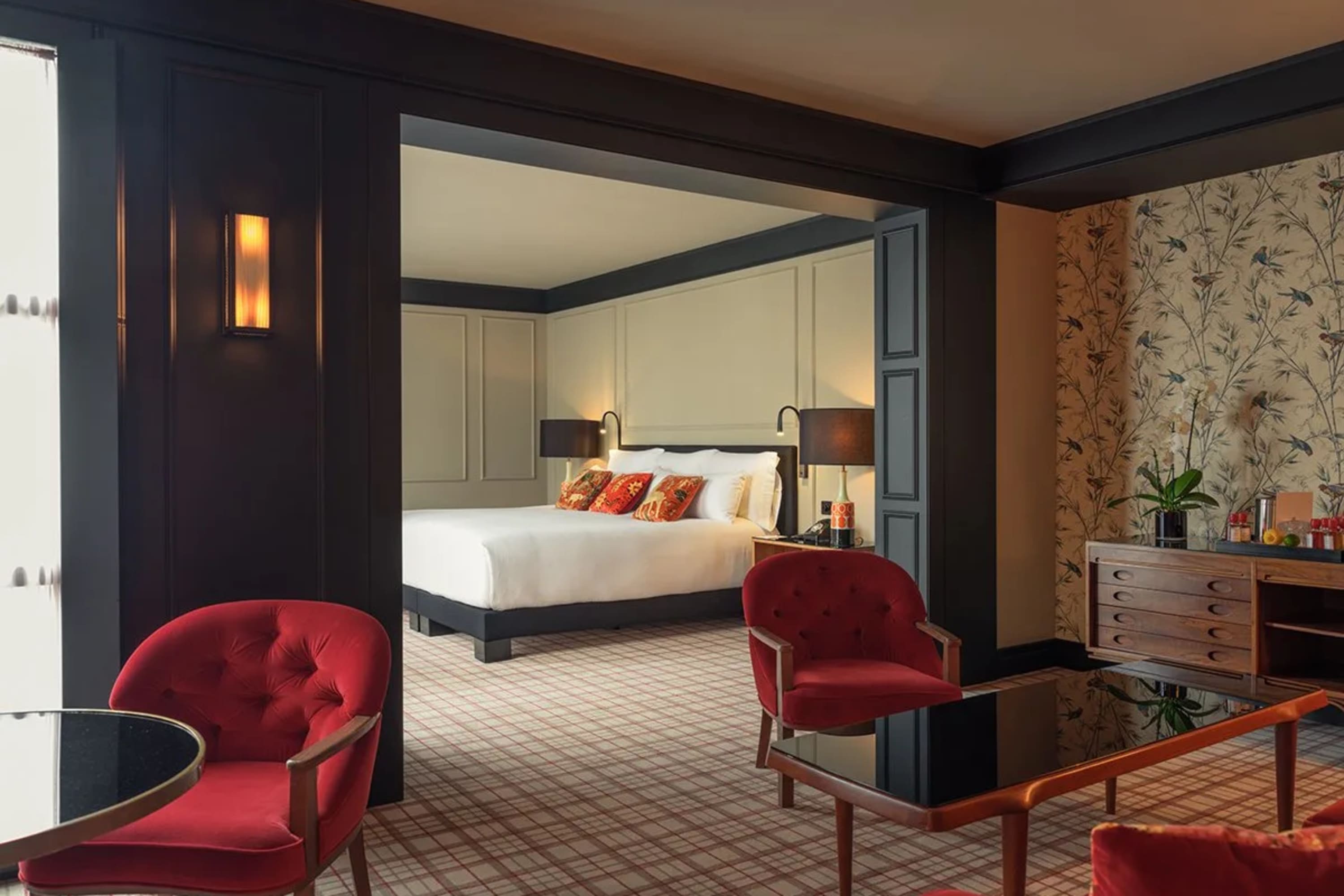
Image courtesy of Wittmore Hotel
Two Gothic Quarter hotels stand out: the Wittmore, one of the best (and most luxurious) boutique hotels Barcelona offers, and Kimpton Vividora, a luxe hotel with a boutique feel.
“If you're looking for a truly unique, adults-only experience in Barcelona, I can't recommend The Wittmore enough,” Fora Advisor Wieteke Maris said. “It’s close enough to feel the pulse of the city but tucked away enough to provide respite from the bustle.”
The Wittmore’s sophistication and thoughtful contemporary style tastefully contrasts with its surroundings. Rooms are spacious and artful, with vintage furnishings and décor — like phone charger hubs disguised as 1950s radios in some units.
Fora X Advisor Jaime Windau noted that the Wittmore is the only five-star adults-only hotel in Barcelona.
“It’s the place to be for a perfect romantic getaway,” she said.
The property only has 22 rooms to go along with its “killer” restaurant, Contraban, and rooftop terrace complete with a plunge pool.
Alternatively, Kimpton Vivadora has a bright, colorful design and vibrant energy. A set of stylish amenities — a gym, spa, restaurants on site — and a rooftop bar provide a contemporary urban oasis amid the historical setting.
“Kimpton Vividora Hotel is a social hub in the heart of Barcelona's historic soul,” Wieteke said. “The daily social hour and the rooftop views are highlights.”
Fora Reserve perks at Wittmore Hotel include a $100 food and beverage credit, welcome amenities, daily breakfast, an upgrade and extended check-in/out whenever possible.
Fora’s IHG Destined at Kimpton Vivadora Barcelona partner perks include a $100 hotel credit, a welcome amenity, daily breakfast, an upgrade and extended check-in/out whenever possible.
Eixample
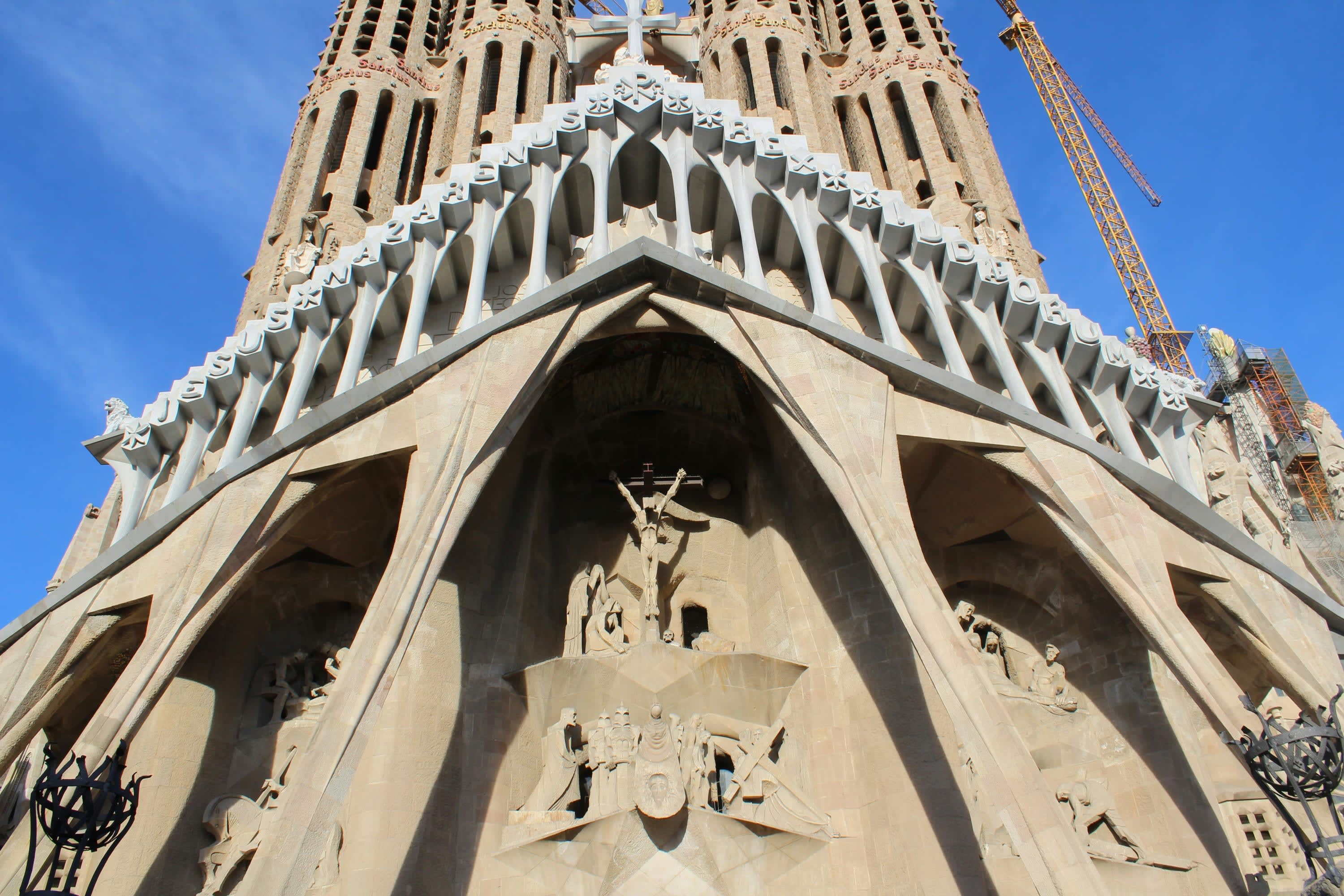
Barcelona’s Eixample, “expansion” in Catalan, extends west from Ciutat Vella in a meticulously planned layout. Modernist architecture shows how Barcelona evolved from its Gothic roots along the sea. Originally designed by Ildefons Cerdà in the 1800s, the area is distinguished by its wide boulevards, octagonal blocks and light-filled streets — a product of the area’s architectural prowess. The district is home to many of Barcelona’s more recent architectural masterpieces, including Gaudí’s Casa Batlló and La Pedrera.
“If you’re looking for a neighborhood that’s beautiful, central and easy to navigate, Eixample is it,” Lauren said. “Wide, elegant streets make it a breeze to get around, and you’ll be surrounded by some of Barcelona’s most stunning architecture.”
Eixample is where to stay in Barcelona if you prefer to stay near the city’s best shopping and dining without sacrificing access to other neighborhoods. The Gothic Quarter, El Raval and Gràcia, where you’ll find Park Güell, are all within walking distance — or you can take advantage of the city’s public transport.
“Eixample is a dream for architecture lovers, with its grid-like streets lined with Modernist masterpieces,” Spain-based Fora X Advisor Marisa Schwab said. “It’s also an unbeatable location for exploring Barcelona’s best restaurants and shopping along Passeig de Gràcia.”
The grand street is famous for its elegant and bustling atmosphere. But it’s also a major thoroughfare that starts in Gràcia. The bulk of the street then runs through Eixample, its most lively section, before ending in the Gothic Quarter. Many of Barcelona’s best hotels are either on or near Passeig de Gràcia.
Highlights: Casa Milà, Casa Batlló, Sagrada Família
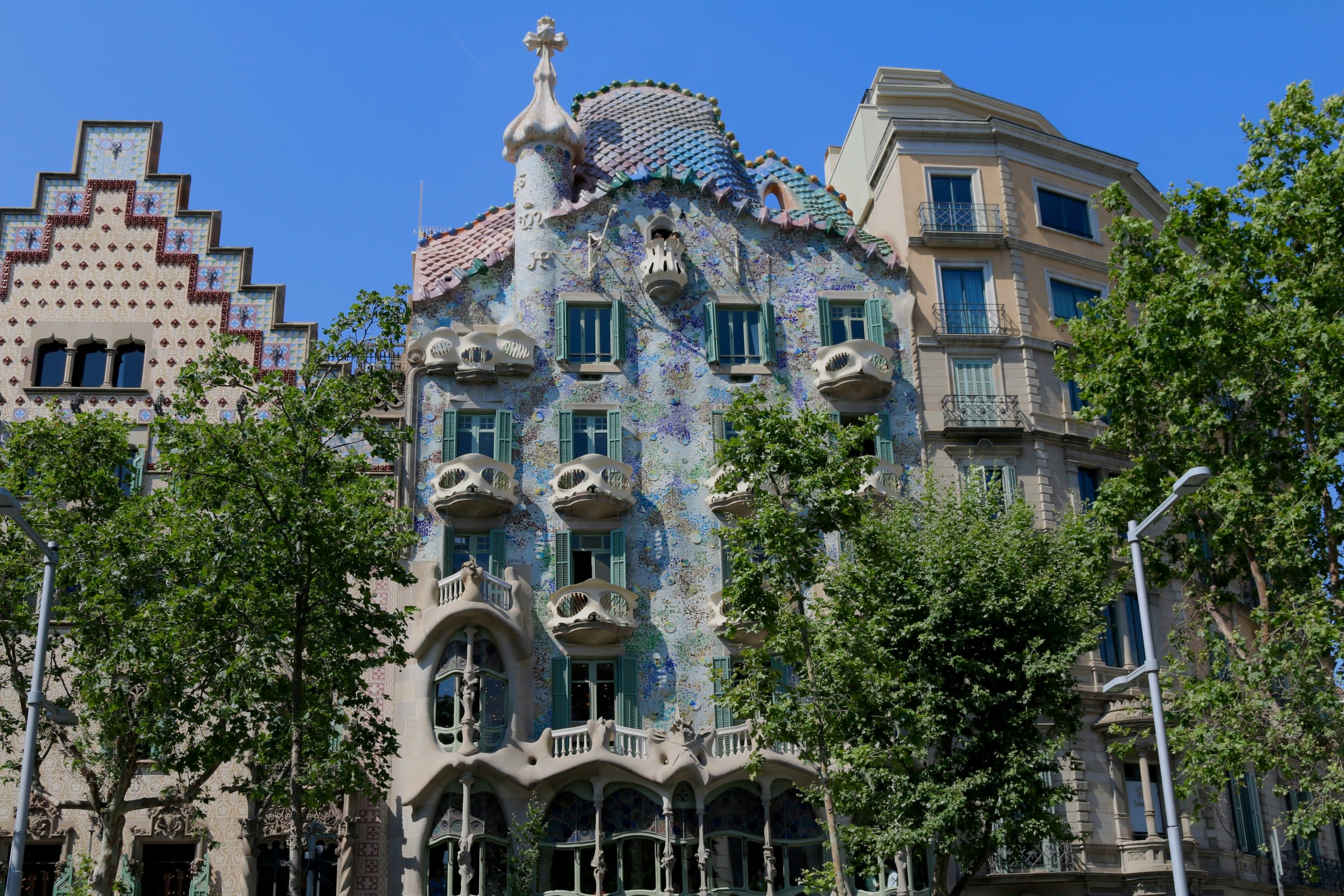
Barcelona is the place to go in Spain if you’re interested in Antoni Gaudí’s legendary work.
“You can't experience the city fully without immersing yourself in the masterpieces of Gaudí, whose architectural genius defines Barcelona’s skyline,” Fora Advisor Valeriya Vygodnaya said.
Notable examples she highlighted include Casa Milà, Casa Batlló and the Sagrada Família basilica, which she described as “one of the most enigmatic cathedrals in the world.”
Casa Milà (a.k.a. La Pedrera) has a quarry-like, wavy stone façade and wrought-iron balconies eerily reminiscent of something living. Casa Batlló — sometimes likened to the bones of a dragon — is similarly magical. The structure has a colorful mosaic façade, incorporates imaginative use of light and boasts surreal design elements with a fairytale-like whimsy.
No other landmark in Barcelona has received as much praise from Fora Advisors as the basilica. Valeriya described the Sagrada Familia as an unparalleled masterpiece of intricate details and hidden symbolism. Soaring columns and stained-glass windows create a “breathtaking play of light and space,” she said.
The Sagrada Familia is one of Spain’s most visited sites. Crowds are ever present, but there are ways to maximize your visit. Though the structure is still under construction — a testament to the intricacies of the basilica — you can tour its interior, too.
“While the outside alone is something you can only dream about (the detail is insane!), you have to go inside,” Fora Advisor Suzanne Lee said. “I actually teared up walking through the front door…There is no way that a photo can do this place justice!”
Lauren added that the basilica is always busy, but “there’s a reason millions visit every year. It’s unforgettable.” Be sure to book tickets in advance or you’ll be stuck in long lines.
Fora Advisor Tanima Mannan recommended visiting the basilica’s rooftop during sunset for beautiful views of the city.
“You will have to walk down, so make sure you have comfortable shoes!” she said.
Where to stay in Barcelona’s Eixample neighborhood: Mandarin Oriental, Alma, Almanac or Nobu Hotel
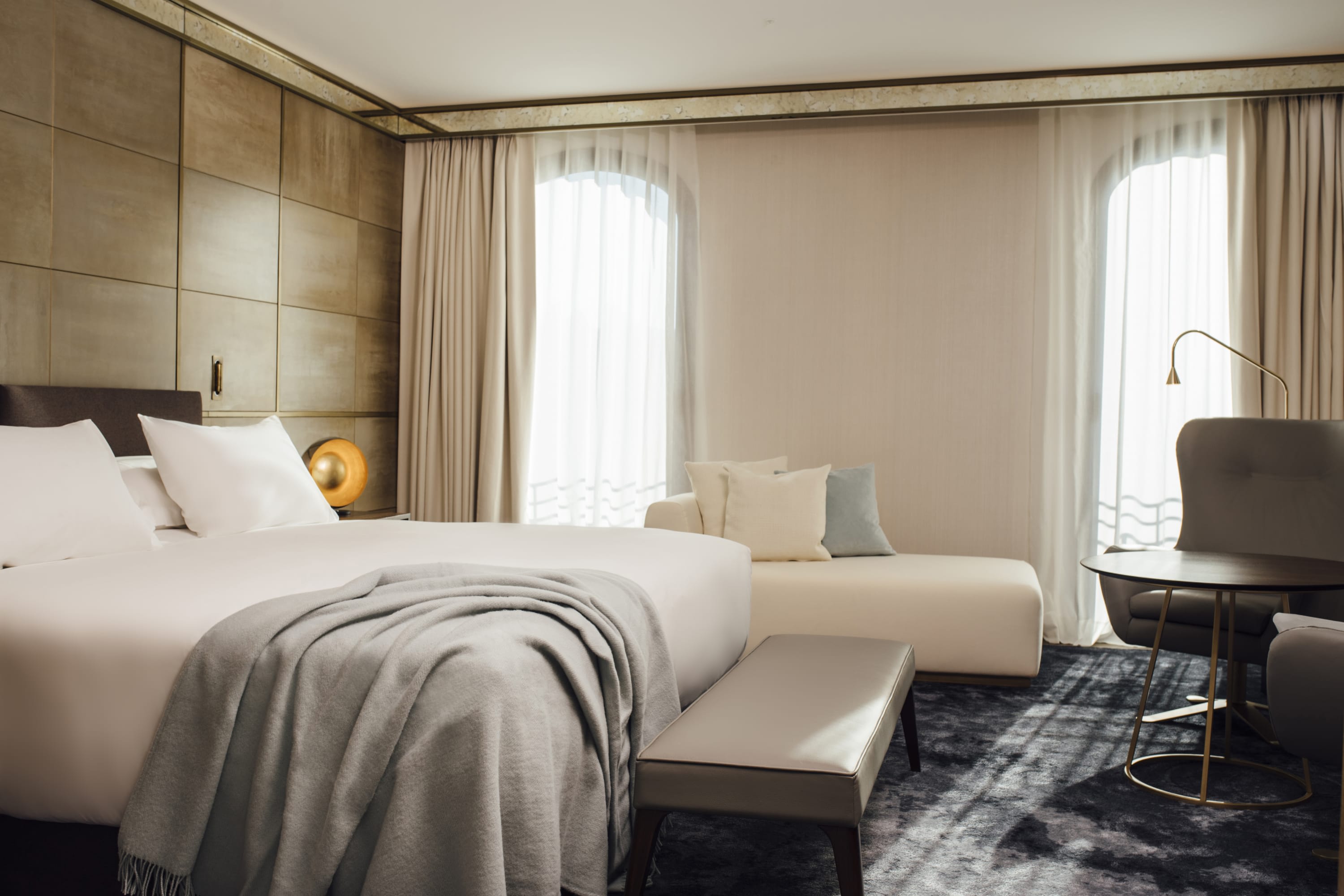
Image courtesy of Almanac Barcelona
Eixample has no shortage of luxury and mid-range hotel options. Among our favorites are Mandarin Oriental, Alma, Almanac and Nobu Hotel.
“Mandarin Oriental, Barcelona is a sophisticated urban sanctuary, where impeccable service meets contemporary elegance,” Wieteke said. “It's a place where you're treated like a VIP, and the attention to detail is remarkable (the Fan Club perks are a game-changer for clients, too).”
The hotel is on Passeig de Gràcia, granting convenient access to Barcelona’s top attractions. Despite this central location, the team at Mandarin Oriental has done a stellar job of ensuring a quiet and laid-back atmosphere to go along with the brand’s impeccable service.
“After settling into your luxurious room, take time to unwind at the Mandarin Oriental Spa,” Valeriya suggested, adding that the treatments are exquisite, and the hotel’s 40-foot pool is a rarity in Barcelona.
“Alma Barcelona is one of the city’s most stylish stays, featuring Barcelona’s best interior garden — a peaceful retreat from the urban buzz,” Marisa said.
Alma Barcelona is a luxe, boutique haven with a minimalist aesthetic and emphasis on relaxation. The property is barely a block away from Casa Milà in Eixample. Enjoy a chic rooftop terrace, a cozy but high-end spa and two restaurants, one a hip breakfast bar, the other a contemporary Catalan choice serving seasonal, organic ingredients.
Jaime “loved Alma’s location, the modern vibes and the feeling that you are staying in an art gallery.”
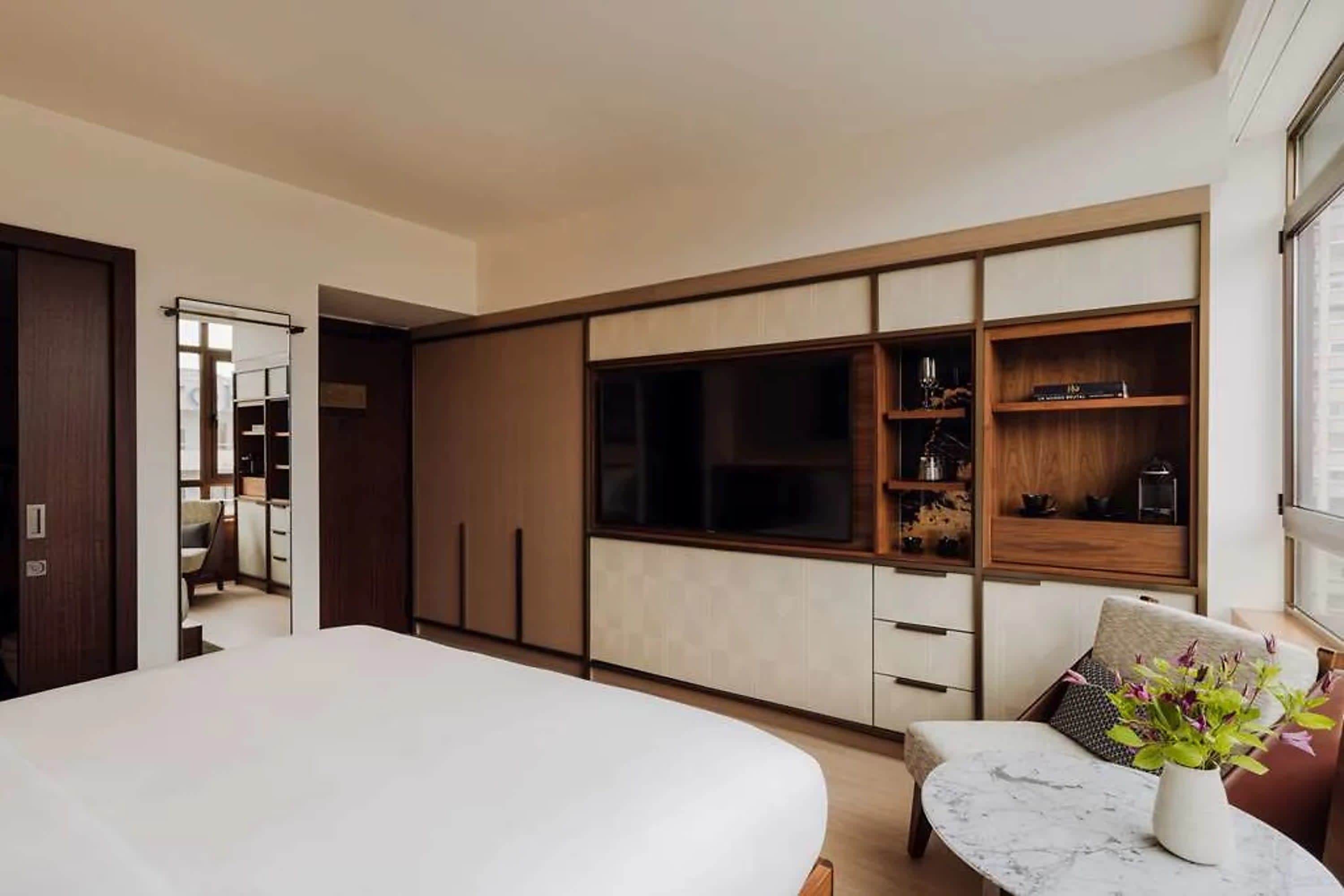
Image courtesy of Nobu Hotel Barcelona
Almanac Barcelona is another boutique choice near Passeig de Gràcia. This is where to stay in Barcelona if you value sustainability and environmental stewardship, which are incorporated into nearly every aspect of the hotel’s avant-garde design and operation. This includes the hotel’s renowned restaurant, Virens, which serves elevated, creative vegetarian dishes.
“Almanac Barcelona strikes that perfect balance of luxury and local character, with a stunning rooftop terrace offering panoramic views of the city skyline,” Seasen said.
Lastly, Nobu Hotel Barcelona is an enclave of Japanese design and gastronomy on the border between Eixample and Sants, a business-centric neighborhood. It’s one of the best places to stay in Barcelona if you’re visiting for business and leisure; its location offers access to both. The hotel hosts its namesake restaurant bar, famous for its fusion of Japanese and Peruvian dishes, along with Kozara, which exists at the intersection between Mediterranean and Japanese cuisine. There’s also a Japanese-inspired spa, meeting and event spaces and rooms for solo and group travelers (the latter isn’t always a given in central Barcelona).
Fora Perks at Mandarin Oriental, Barcelona include a $100 food and beverage credit, a welcome amenity, daily breakfast, an upgrade and an extended check-in/out whenever possible.
Fora Reserve perks at Alma Barcelona include complimentary mini bar and Nespresso, a welcome amenity, an upgrade and extended check-in/out whenever possible.
Fora Reserve perks at Almanac Barcelona include a $100 food and beverage credit, a welcome amenity, daily breakfast, an upgrade and extended check-in/out whenever possible.
Fora Perks at Nobu Hotel Barcelona include a $100 hotel credit, a welcome amenity, daily breakfast, an upgrade and extended check-in/out whenever possible.
El Born, Ciutat Vella
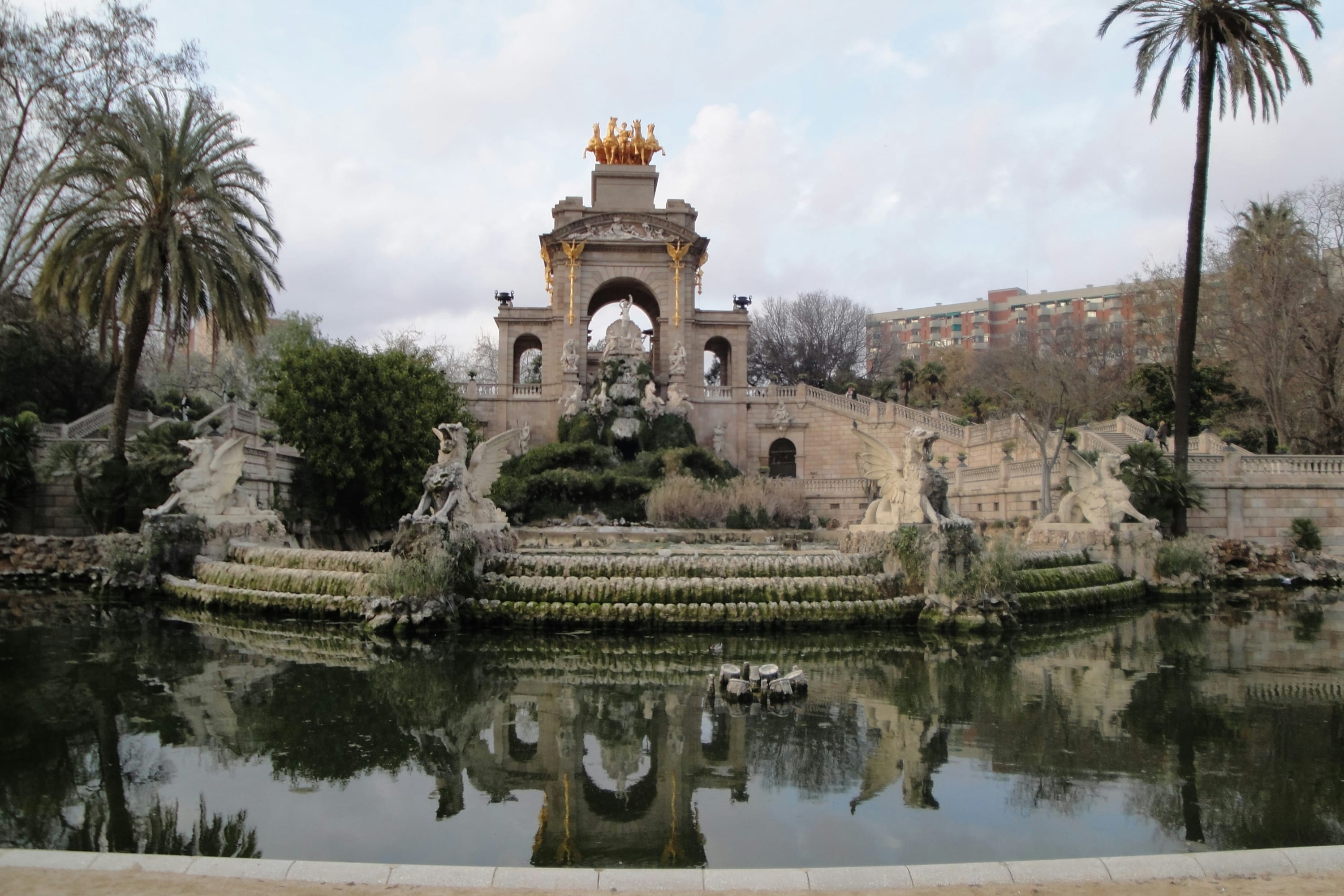
El Born’s medieval streets and architecture give it the appearance of the Gothic District, just to the south. Like the latter, it hosts a notable Gothic cathedral, the imposing Santa Maria del Mar Church. But artisan workshops, museums, indie boutiques and charming cafés give El Born a distinct feel.
“For those seeking a more bohemian vibe, El Born captures Barcelona's artistic spirit with its trendy boutiques and tapas bars tucked away in medieval alleyways,” Seasen said.
El Born is where to stay in Barcelona if you’re mostly interested in exploring Ciutat Vella’s neighborhoods. However, Eixample isn’t far out of reach even on foot if you don’t mind a lengthy walk (around 30 minutes).
Highlights: Ciutadella Park, La Ribera and the Picasso Museum
Ciutadella Park is an underrated green space that hosts Barcelona Zoo —- great if you’re visiting Spain with kids — a small lake and the Catalonian Parliament. The park encompasses El Born’s northern border, and offers a welcome breath of fresh air after exploring Barcelona’s more urban districts.
Within the district itself, La Ribera is a maze of narrow streets with greenery-filled courtyards, shops and eateries. As you follow its paths, you’ll eventually end up in Lar Barceloneta’s promenade. Alternatively, you’ll find the Picasso Museum within La Ribera. The museum celebrates the 20th-century abstract artist and displays over 4,000 of his works.
Where to stay in Barcelona’s El Born neighborhood: The Barcelona EDITION

Image courtesy of The Barcelona EDITION
The Barcelona EDITION is a standout choice in the center of El Born, not far from the Gothic District.
“The Barcelona EDITION exemplifies contemporary luxury with minimalist sophistication,” Arlette said. “Although a Marriott property, this hotel maintains an independent character.”
She noted that the hotel has a boutique vibe with impeccable design: neutral-toned rooms, refined textures, ambient lighting and excellent city views. The Barcelona EDITION has a panoramic terrace bar, an intimate speakeasy hidden under a staircase and Veraz, a fine restaurant that places a Mediterranean spin on international dishes.
Fora’s Marriott STARS partner perks include a $100 hotel credit, a welcome amenity, daily breakfast, an upgrade and extended check-in/out whenever possible.
Gràcia
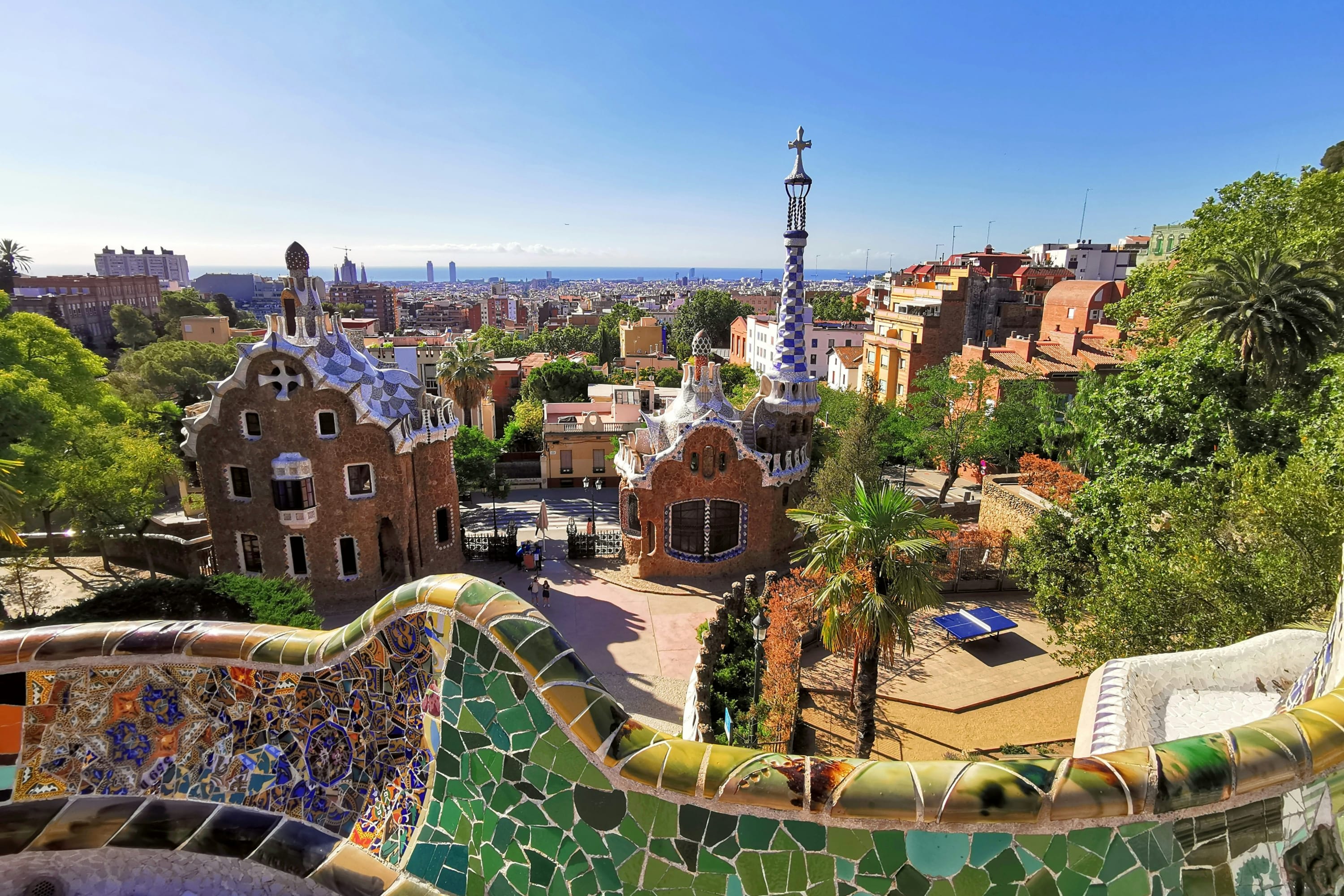
Gràcia — not to be confused with Passeig de Gràcia mentioned above — is similar to El Born in that it’s slightly off the beaten path. Otherwise, the area is one of the most unique places to stay in Barcelona. Gràcia was once a separate town before being absorbed into the city. It retains a strong local identity with charming squares like Plaça de la Virreina and Plaça del Sol, and a thriving arts scene.
“Gràcia maintains the character of a village within the city,” Arlette said.
Staying in Gràcia offers a more relaxed, and perhaps more authentic, experience compared to Barcelona’s popular central districts. The area is perfect if you want to enjoy a mix of trendy cafés, artisan shops and local markets without sacrificing too much access to other sites like Sagrada Familia in Eixample or the Gothic Quarter.
Highlights: Park Güell
Gràcia is the gateway to Gaudí’s Park Güell, one of the city’s most famous landmarks. Mosaic-covered terraces, serpentine benches and whimsical structures like the gatehouses and dragon-shaped fountain at the entrance showcase Gaudí’s style. Valeriya noted that you can enjoy amazing, panoramic views of Barcelona from the park’s terraces, which are perched above the heart of the city.
“Park Güell is like stepping into a fairytale,” Wieteke said. “The architecture and panoramic views are unforgettable.”
She recommended visiting either early in the morning or late in the afternoon to avoid crowds.
Where to stay in Barcelona’s Gràcia neighborhood: Hotel Casa Fuster
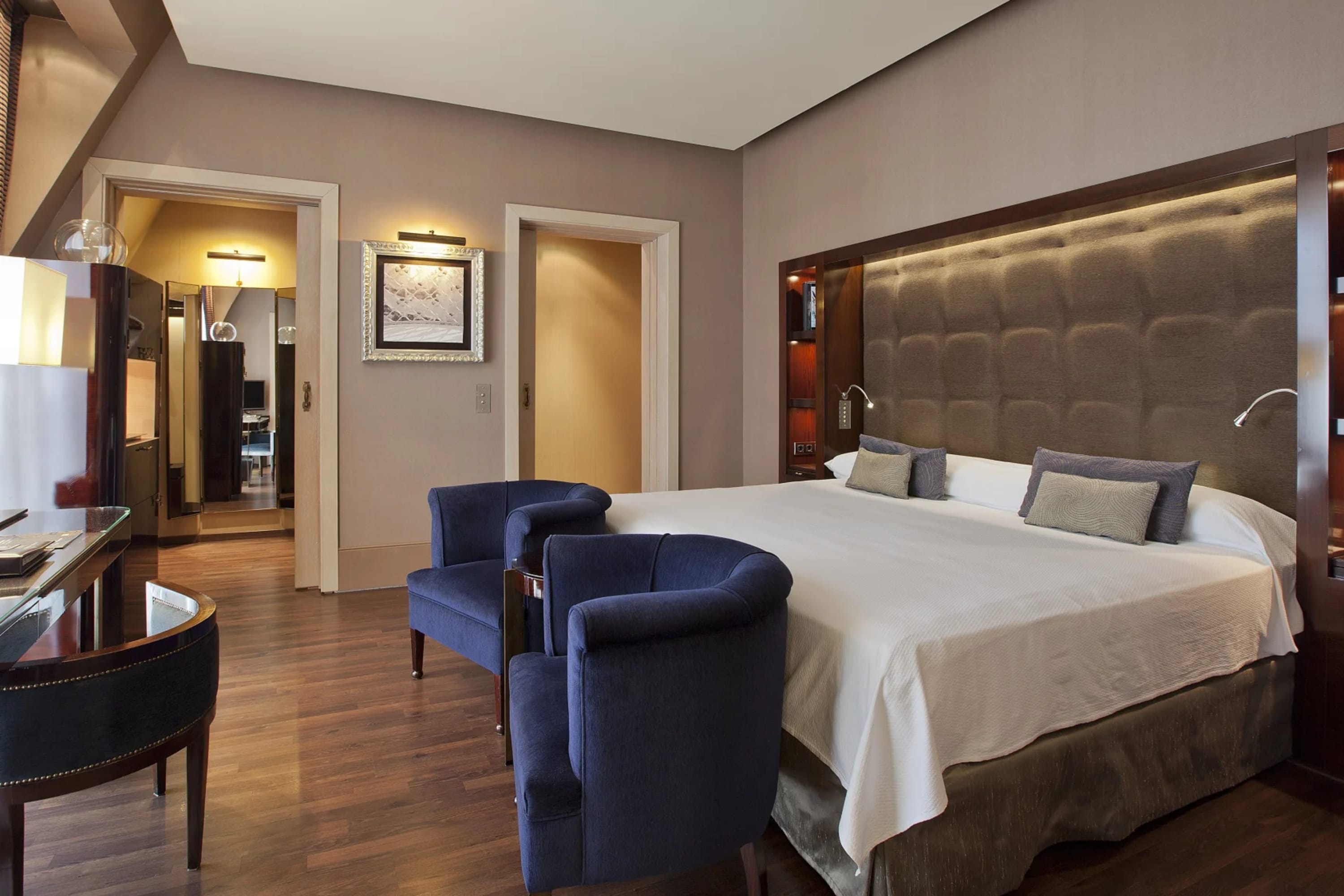
Image courtesy of Hotel Casa Fuster
If you’re looking for somewhere in Barcelona’s Gràcia that’s relatively quiet but offers access to the rest of the city, opt for Hotel Casa Fuster. Although it’s technically located in Gràcia — where you can enjoy a laid-back vibe — it’s at the very top of Passeig de Gràcia, which conveniently provides access to Eixample and the Gothic Quarter.
“A dream for architecture lovers, this historic building by Lluís Domènech i Montaner offers classic elegance in a prime location,” Marisa said.
Hotel Casa Fuster’s striking façade and sumptuous interiors capture the essence of early-20th-century Catalan artistry while offering all the modern comforts expected of a luxury hotel: refined dining, a sophisticated rooftop terrace, spa, salon and gym. There’s also a jazz club that hosts live music every Thursday evening.
Fora Perks include daily breakfast and extended check-in/out whenever possible.
La Barceloneta, Ciutat Vella
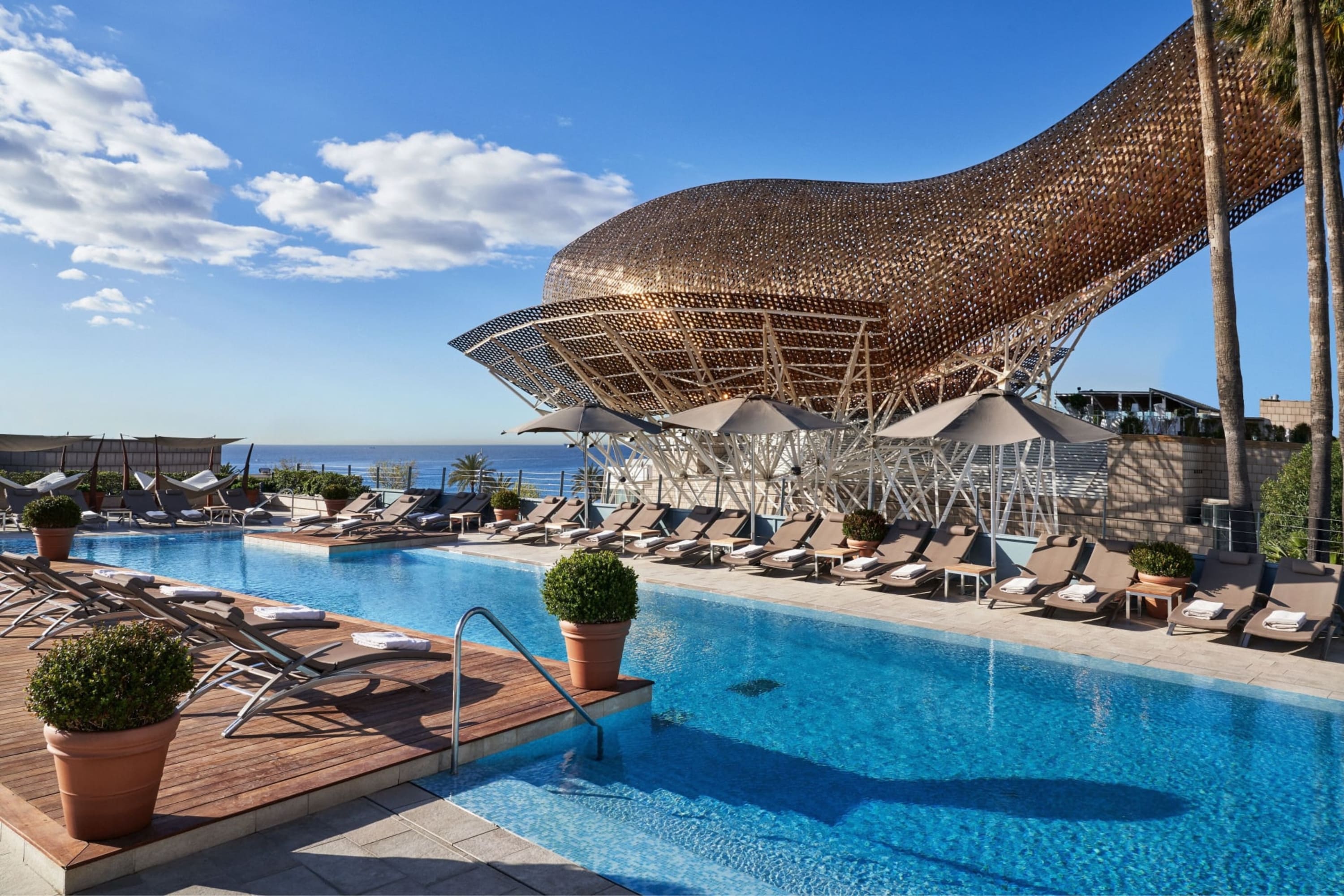
Image courtesy of Hotel Arts Barcelona
La Barceloneta is a historic seaside neighborhood that best exemplifies Barcelona's coastal charm. Once a humble fishing village, it has evolved into a bustling hub where narrow, winding streets — much like those in El Born — give way to sandy beaches, a picturesque promenade and a rich array of seafood restaurants and tapas bars. This is where to stay in Barcelona if you’re looking for a lavish beachfront hotel that’s close to the city’s top sites.
Where to stay in Barcelona’s La Barceloneta neighborhood: Hotel Arts Barcelona
Hotel Arts Barcelona is a striking high-rise luxury hotel under The Ritz-Carlton umbrella. Its gleaming contemporary façade towers over Barcelona’s waterfront near the Olympic Port. Views from the best rooms are virtually unmatched. Here, you’re treated to an array of gourmet dining experiences, including Michelin-Starred Mediterranean restaurant Enoteca Paco Pérez, a luxury spa and a sizable outdoor pool. Like Nobu Hotel, Hotel Arts Barcelona caters to leisure and business travelers, with dedicated amenities like meeting rooms and events spaces.
Fora’s Marriott STARS partner perks include a $100 hotel credit, a welcome amenity, daily breakfast, an upgrade and extended check-in/out whenever possible.
El Raval, Ciutat Vella
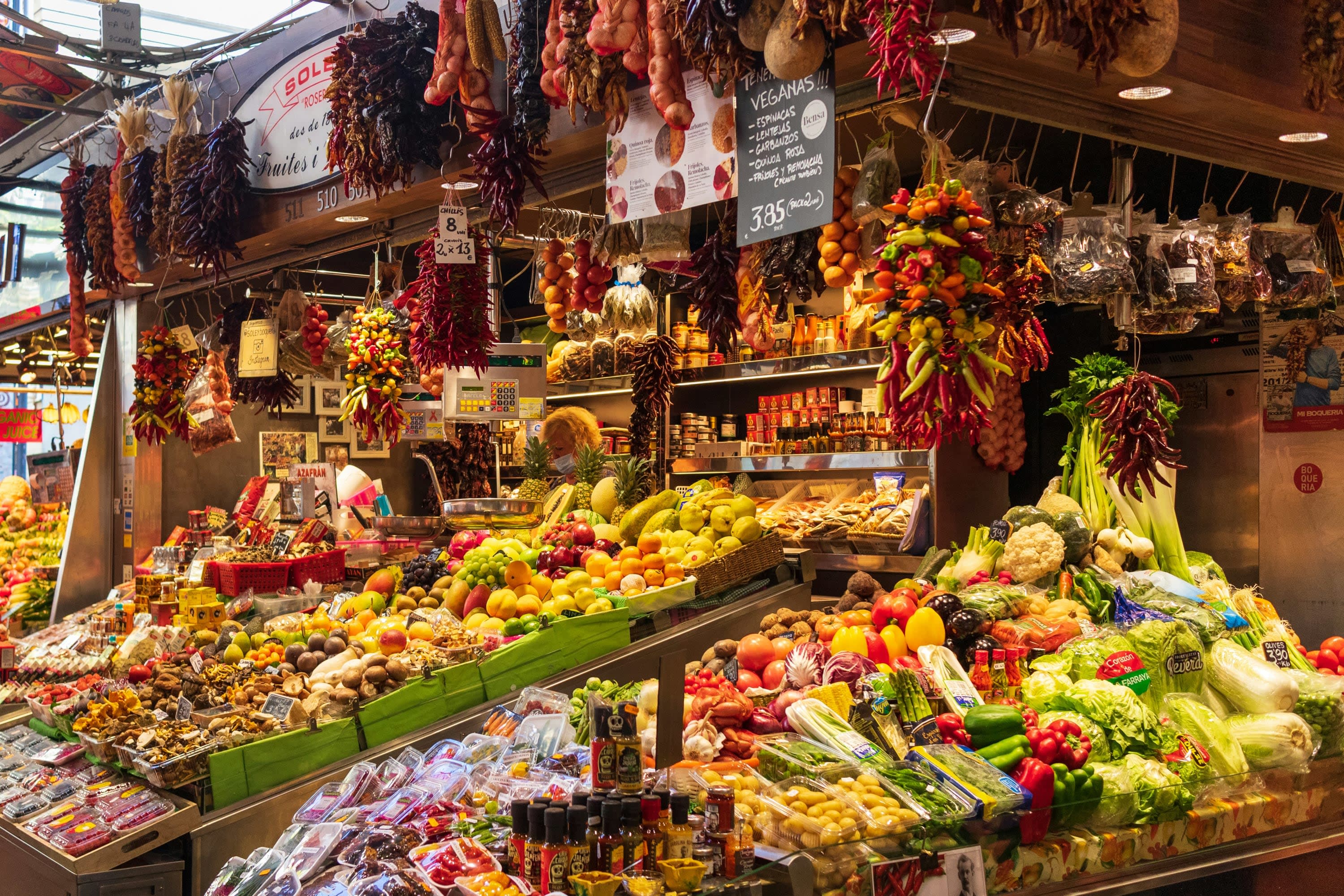
El Raval is one of Barcelona's most eclectic and dynamic neighborhoods. It has a cosmopolitan atmosphere complemented by a vibrant arts scene. In past decades, it was known for its gritty streets, but it has since evolved into a creative hub featuring contemporary art spaces like Barcelona’s Museum of Contemporary Art, diverse eateries (“Don’t miss Mercat de la Boqueria, an indoor market where you can eat and drink to your heart’s content!” Fora Advisor Carlie Lee recommended) and indie boutiques. Like in the neighboring Gothic Quarter, labyrinthine streets define El Raval’s layout. An ever-changing canvas of street murals and art installations gives El Raval a distinct personality.
Highlights: La Boqueria Market and the MACBA
La Boqueria Market is like a cross between a grocery store and a farmers’ market. Stalls and mini shops sell everything from regional produce and pastries to international finds and street food.
“Although Barcelona is a paradise for gastronomic and Michelin-Starred experiences, it’s worth going local and authentic to truly experience the city’s culinary soul,” Valeriya said. “The vibrant La Boqueria Market is an iconic destination where the colors, aromas and flavors of fresh seafood, Iberian ham, artisan cheeses and exotic fruits create a feast for the senses.”
The Museum of Contemporary Art of Barcelona, or simply MACBA, is a world-class — and posh — institution showcasing an extensive collection of art dating back to the 1940s, as well as a section dedicated to Catalonia.
Where to stay in Barcelona’s El Raval neighborhood: Hotel Bagués Barcelona
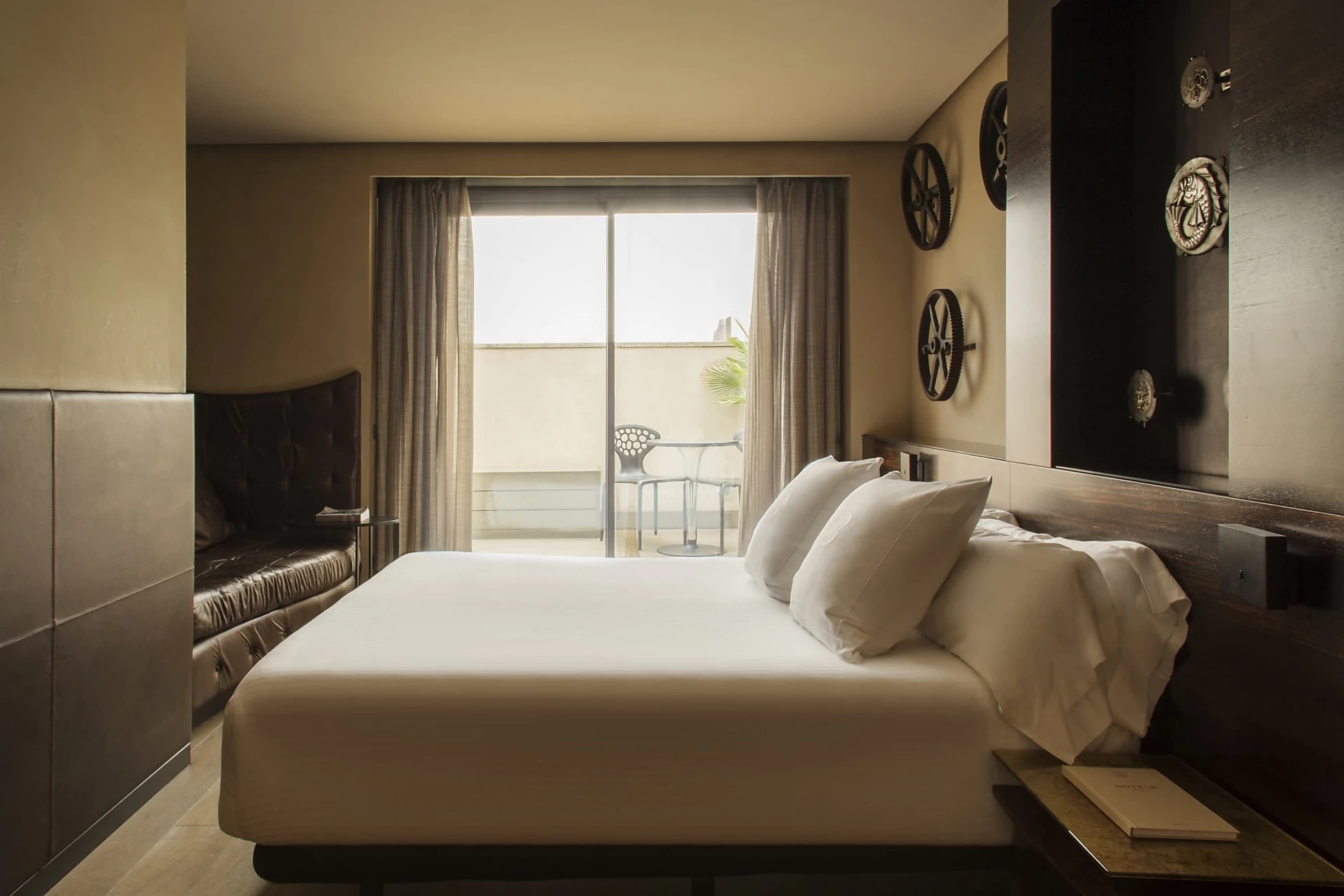
Image courtesy of Hotel Bagués Barcelona
Hotel Bagués is an artful choice and excellent base for exploring El Raval and beyond. The hotel has a museum-like quality to it, with art nouveau displays — particularly those by Émile Gallé — throughout its common spaces and some rooms. The hotel features surprisingly spacious rooms for a boutique property and a mature, East-meets-West aesthetic — think Japanese screen partitions and hidden storage space, and vintage leather and hardwood European furnishings.
Fora Reserve perks include complimentary access to Barcelona’s Egyptian Museum, welcome amenities, an upgrade and extended check-in/out whenever possible.
Fora Advisors’ Barcelona travel tips
Along with recs for where to stay in Barcelona, Fora Advisors provided a few general travel tips like when to visit and how to get around.
Spring and fall are the best times to visit the city
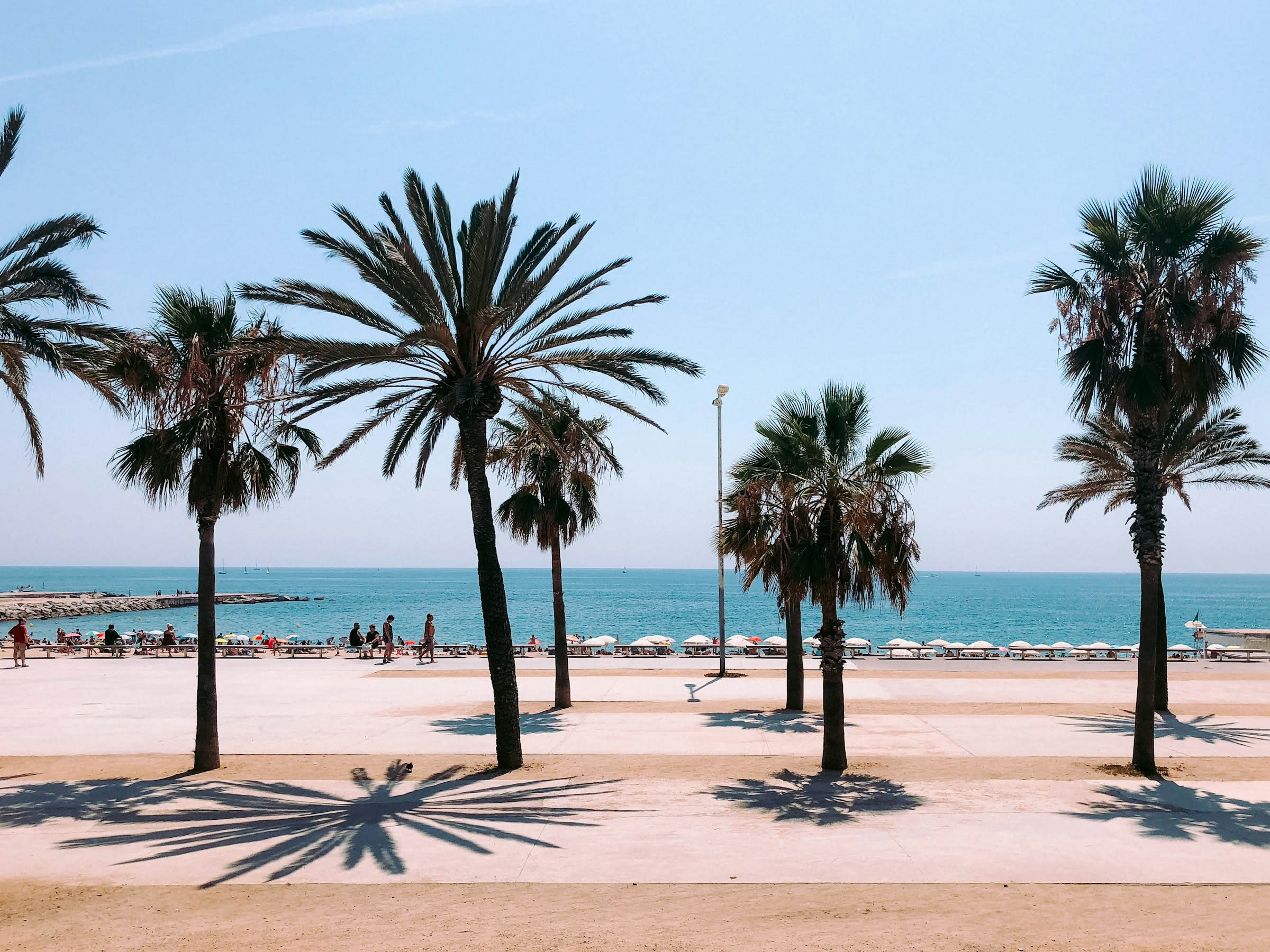
May through June or September through October are the best overall months to visit Barcelona. These months offer an idyllic balance between great weather, reasonable hotel rates and moderate crowds (Barcelona is almost always busy). While summer can be hot and exceedingly crowded, it’s the best time to enjoy the water. Winter is great if you’re only interested in cultural attractions, and you may luck out with crowds.
Spend 3-5 days in Barcelona
You can spend weeks in Barcelona and not see everything. However, most Fora Advisors recommend three to five days. This gives you enough time to explore major neighborhoods like the Gothic Quarter and Eixample while also saving some time for wandering. You’ll also have time for day trips.
Book restaurants and popular experiences in advance
Barcelona’s top attractions and eateries often have a waitlist.
“Tickets for must-see attractions like Sagrada Familia and the iconic Parc Güell will sell out, so if you have your heart set on visiting them, be sure to purchase your tickets in advance,” Fora Advisor Lisa Garrett said.
If you don’t reserve tickets, you may be lucky enough to make the line. However, this is no sure bet.
“Trust me, watching others breeze past while you're stuck in a two-hour queue is not the vacation vibe you want!” Seasen said.
Enjoy day trips outside of Barcelona
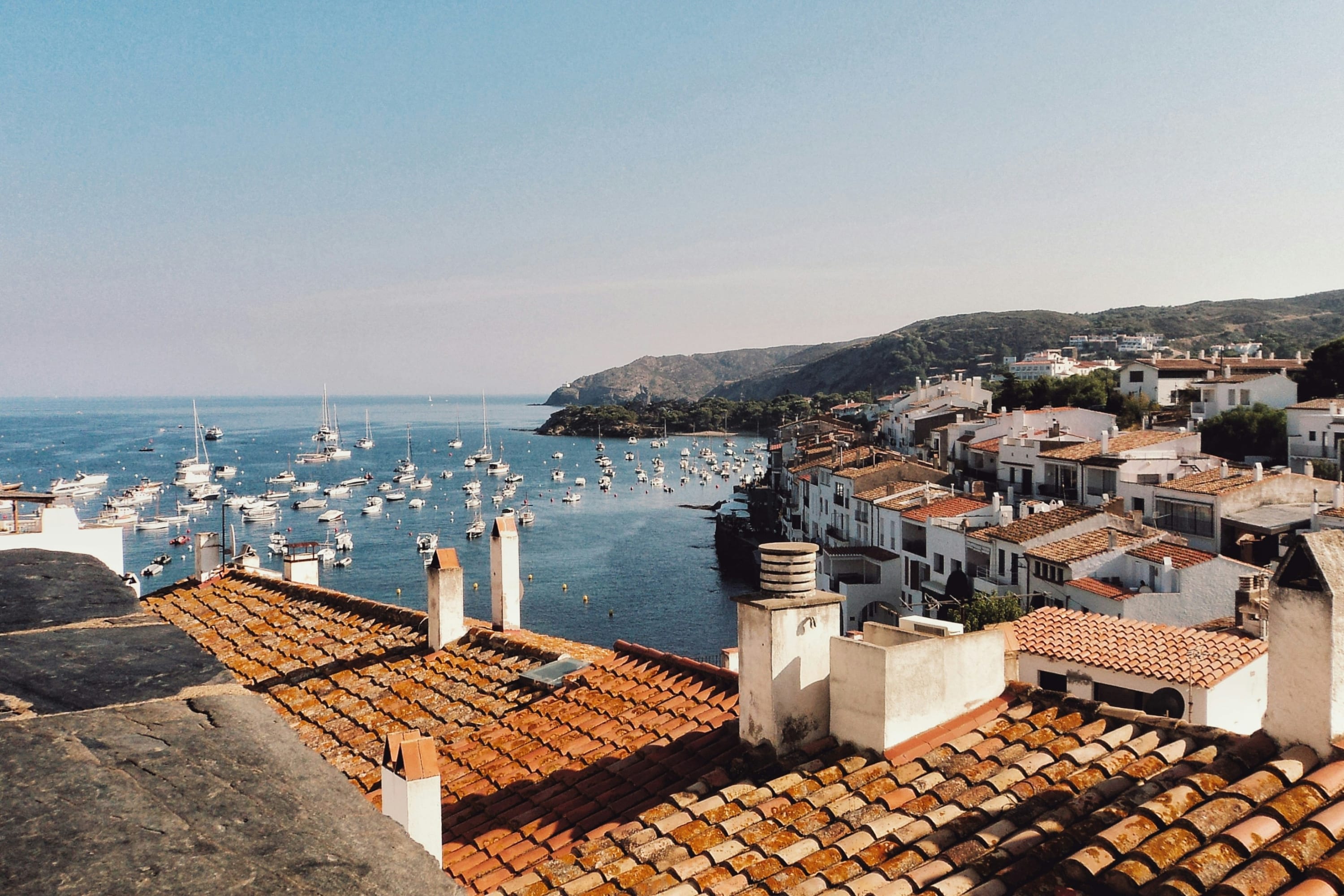
Barcelona is just one of many amazing places to go in Spain.
“While Barcelona is amazing, get out of the city,” Fora Advisor Rod Carrillo-Lundgren said.
He recommended visiting Girona, sampling seafood along the Costa Brava and touring the Santa Maria de Montserrat Abbey.
Fora X Advisor Renée Olson noted that there’s a wine region only 20 minutes outside the city. It’s the “perfect way to escape the city without adding a ton of travel time to your trip,” she said.
If you’re a savvy shopper, Suzanne recommended visiting La Roca Village, a luxury outlet mall about 30 minutes from Barcelona. Unlike outlets in the United States, where items are made specifically for the outlets, Spain’s versions sell authentic designer items (Gucci, Prada, Max Mara) from the prior season for a reduced price. If you book your Barcelona hotel stay with a Fora Advisor, you can enjoy complimentary VIP shopping experience at the outlets including roundtrip transfers, access to an exclusive lounge area, hands-free shopping and a discount at some stores.
Meals start late in Spain
In Spain, it’s normal to wait until 9 pm or later to enjoy dinner.
“Showing up at 7 pm will get you empty restaurants and concerned looks from locals,” Seasen said.
Breakfast is still anywhere early to late morning, while lunch is typically served between two and 3:30. Tapas, however, can be enjoyed virtually any time — and are not to be missed.
“Traditional tapas bars are where the essence of Spanish cuisine comes alive,” Valeriya said.
Indulge in everything from grilled octopus and padrón peppers to freshly made croquetas and pan con tomate, she said.
“Whether in a lively bodega or a tucked-away family-run eatery, these small bites offer a taste of Barcelona’s rich culinary heritage, best enjoyed in good company and with a relaxed pace,” she added.
Learn a few Catalan phrases
Catalan — not Spanish — is the most widely spoken language in Barcelona. Though the two languages share many similarities, they are distinct. Learning a few basic phrases can ingratiate you among locals, and potentially open doors.
“Even a simple ‘bondia' will earn you warm smiles and might score you insider recommendations that no guidebook could offer!” Seasen said.
Explore Barcelona on foot
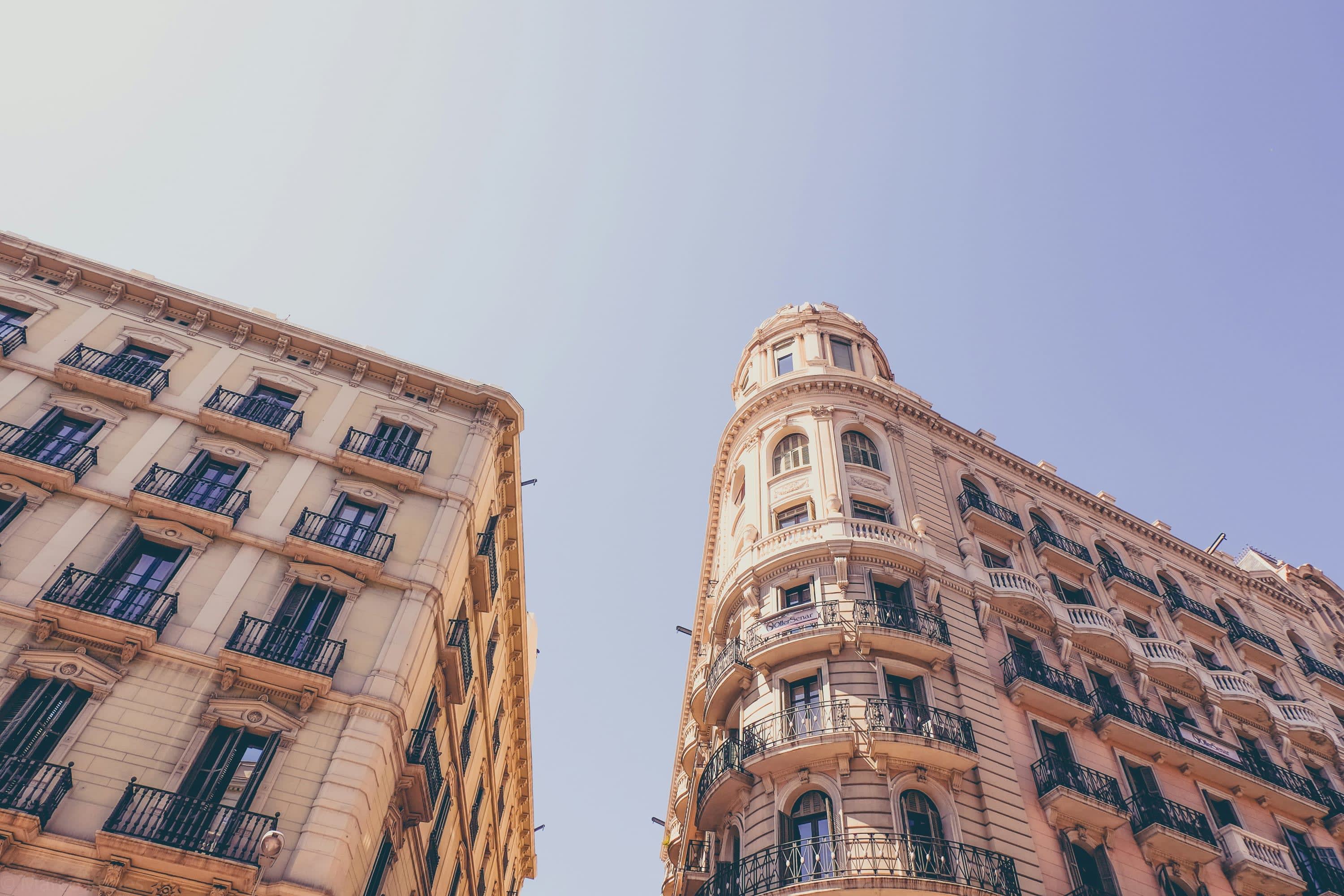
Barcelona is exceptionally walkable. Seasen noted that the T-casual metro card is essential for zipping around the city if you’re traveling far distances. But “the real magic of Barcelona reveals itself when you wander on foot,” she said. While it’s wise to reserve experiences like visiting the Sagradia Familia in advance, save time for wandering Barcelona’s streets, too. Sometimes the best experiences are sparked by spontaneity.
More Spain travel inspiration
Check out more articles on Spain’s best destinations:
